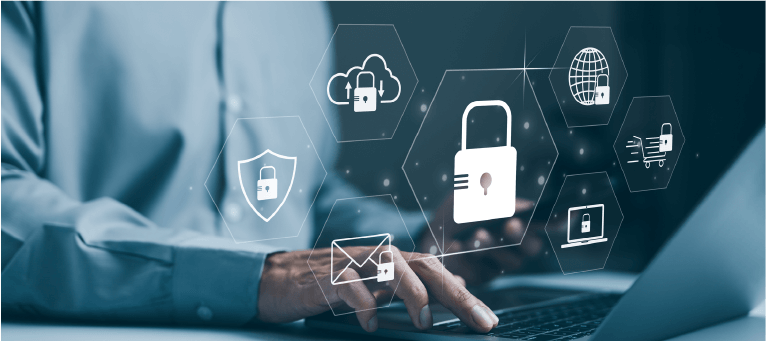In many ways, 2020 was marked by the focus on protecting oneself: using hand sanitizer, social distancing, wearing a mask, etc. Unfortunately, like the coronavirus, attackers and malware only need to find one weak link in your company’s cybersecurity immune system to cause real damage. Ransomware, data breaches, cloud security misconfigurations, and more have all hit an all-time high. As more and more employees worked from home, sensitive data was shared over video chats and unsecured clouds and devices. Monitoring and ensuring data security has never been more important but perhaps never more difficult to maintain. That’s why it is so important to have the policies, procedures, systems, and products in place to stop a data breach before it starts.
On any map, it’s next to impossible to figure out what route to take if you don’t know where you’re starting from. The same is true for a security roadmap. Tool rationalization and security assessments can help you understand what you need, what software you currently have, whether your current software meets those needs, and what any new software going in should contain. GDT can walk you through this process to design the exact security-optimized solution needed for your unique business. We help you assess where you are and where you need to go to improve your security posture.
If you don’t have a security operations center (SOC) currently, that should be top priority. SOCs monitor and analyze activity on across a wide range of systems—networks, servers, endpoints, databases, applications, websites, and others—remaining vigilant for out of the ordinary activity that could be indicative of a security incident. SOCs ensure that potential security incidents are quickly identified, analyzed, defended, investigated, and reported. The market for cybersecurity talent is very tight, and it is difficult to hire and retain staff in this area, which leads many companies to look at MSSP or managed detection and response (MDR) solutions. GDT has a rich MDR solution that ties in with our industry leading managed services practice that we can provide to bring a SOC to your company or augment your current security team with experienced professionals. Widening the net in this way can help you mitigate your security risk.
A critical control in your cybersecurity toolbelt is a strong endpoint protection solution. Endpoints, the devices people use to access company resources, are a primary weak spot in organizational security. This is where the attackers tend to focus their efforts as it only takes one compromised endpoint to provide the attacker an onramp to your corporate infrastructure and access to corporate data. The sheer number of endpoints (servers, desktops, laptops, mobile devices, etc.), all with different operating systems, versions, and browsers, adds complexity to security management and oversight. That’s why most security breaches originate with an endpoint. That’s also why endpoint protection must be a companywide ecosystem, rather than a random assortment of single solutions for each endpoint. GDT can help you protect your endpoints without sacrificing end user usability.
If you do get hit with a breach or ransomware attack, GDT can help you with incident response. Incident response aims to identify and contain the damage resulting from a breach and recover as quickly as possible. Importantly, after an attack or attempted attack, a thorough investigation is performed to learn from the attack and better prepare for the future. Because many companies today experience a breach at some point in time, a well-developed and repeatable incident response plan is the best way to protect your company over the long term.
If you have any questions about how GDT can help you stop a breach before it starts, provide your information below and we will contact you to help you learn more.




